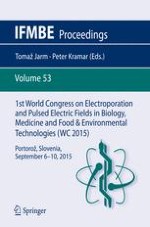This volume presents the proceedings of the 1st World Congress on Electroporation and Pulsed Electric Fields in Biology, Medicine and Food & Environmental Technologies (WC2015). The congress took place in Portorož, Slovenia, during the week of September 6th to 10th, 2015. The scientific part of the Congress covered different aspects of electroporation and related technologies and included the following main topics:
· Application of pulsed electric fields technology in food: challenges and opportunities
· Electrical impedance measurement for assessment of electroporation yield
· Electrochemistry and electroporation
· Electroporation meets electrostimulation
· Electrotechnologies for food and biomass treatment
· Food and biotechnology applications
· In vitro electroporation - basic mechanisms
· Interfacial behaviour of lipid-assemblies, membranes and cells in electric fields
· Irreversible electroporation in clinical use
· Medical applications: electrochemotherapy
· Medical applications: gene therapy
· Non-electric field-based physical methods inducing cell poration and enhanced molecule transfer
· Non-thermal plasmas for food safety, environmental applications and medical treatments
· PEF for the food industry: fundamentals and applications
· PEF proce
ss integration - complex process chains and process combinations in the food industry
· Predictable animal models
·
Pulsed electric fields and electroporation technologies in bioeconomy
· Veterinary medical applications
